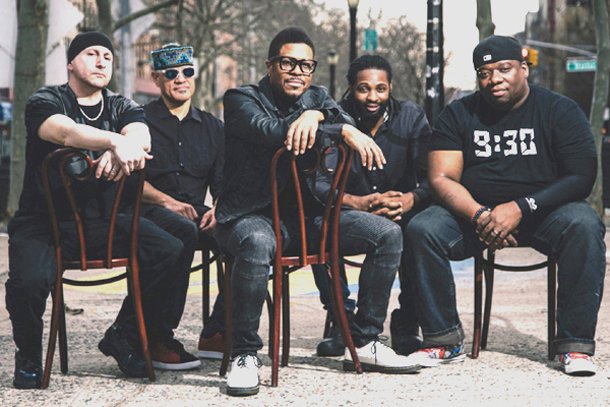Note from the Past (Live)
(Edited)
Hiromi’s Sonicbloom: Hiromi Uehara (piano, synthesizer), David Fiuczynski (electric guitar), Tony Grey (electric bass) and Martin Valihora (drums) playing in Japan (2007).
David Fiuczynski began to gain reputation by awakening the world of jazz-rock with his debut as a leader, the landmark Lunar Crush (1994), in which he plays with keyboardist John Medeski of the avant-jazz-funk trio Medeski Martin & Wood, who uses a Hammond B-3 organ and a Wurlitzer electric piano. The album is a whirlwind of jazz, rock, funk and hip hop with unusual phrasing and furious chops by Fiuczynski. It’s a tribute to late 1960s and 1970s pioneering jazz fusion band Lifetime of legendary drummer Tony Williams, and was chosen by Guitar Player’s magazine 30th Anniversary Edition as a “Disc of Destiny”.

Lunar Crush cover
In 1995 Fiuczynski recorded with his powerful experimental jazz-rock quintet Screaming Headless Torsos consisting of singer Dean Bowman, himself on guitar, Fima Ephron on electric bass, Jojo Mayer on drums and Daniel Sadownick on percussion, their first album Screaming Headless Torsos. Bowman provides personality to the group inspired by punk opera singer Nina Hagen in explosive rock, funk and reggae themes with jazz progressions and complex rhythms, as well as rap and funk-metal. The band was chosen by Musician Magazine as one of the top ten in 1996. Funk-metal is a combination of funk rock and alternative metal (rock, heavy metal, thrash metal and other influences) that was in fashion in the late 1980s and early 1990s.

Screaming Headless Torsos
In 1997 Fiuczynski joined tenor saxophonist Greg Wall, trumpeter Frank London, electric bassist Firma Ephron and drummer and percussionist Aaron Alexander, all jazz musicians, to start Hasidic New Wave. Wall and London met at the New England Conservatory studying jazz with a common interest in the music of the Hasidic Jewish branch, klezmer, which is interpreted in Eastern Europe. Later on they coincided in New York and learned to play this kind of music at weddings and parties in order to live. Then they looked for other musicians to blend it with rock, avant-garde and elements of African music, but always maintaining klezmer prevalence.

Hasidic New Wave

0
0
0.000

Nice article. Thanks.
You're welcome! To be continued next Thursday...